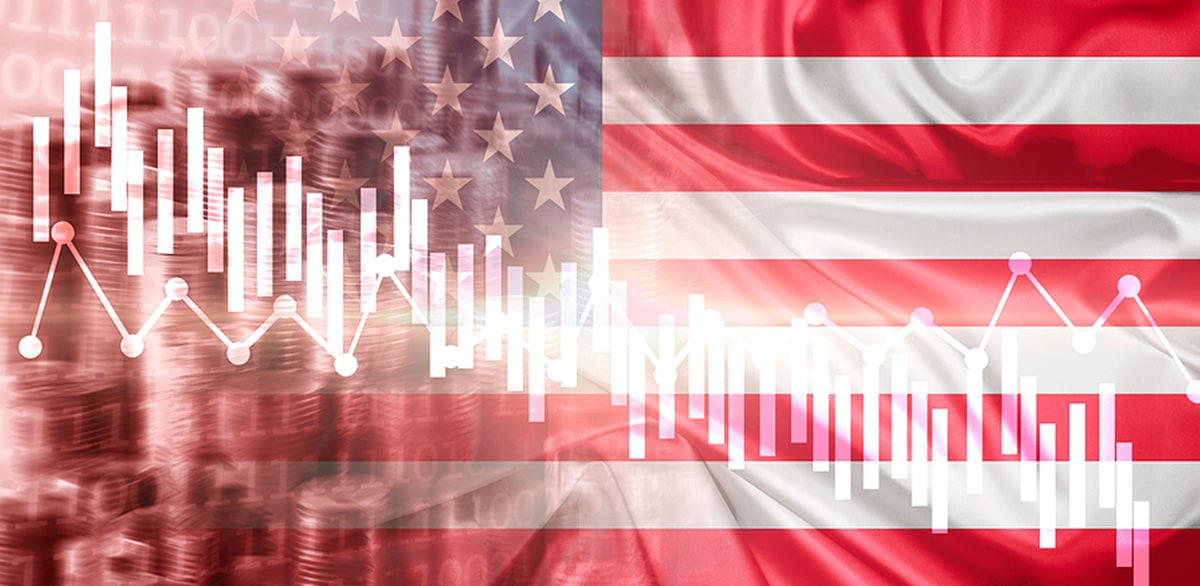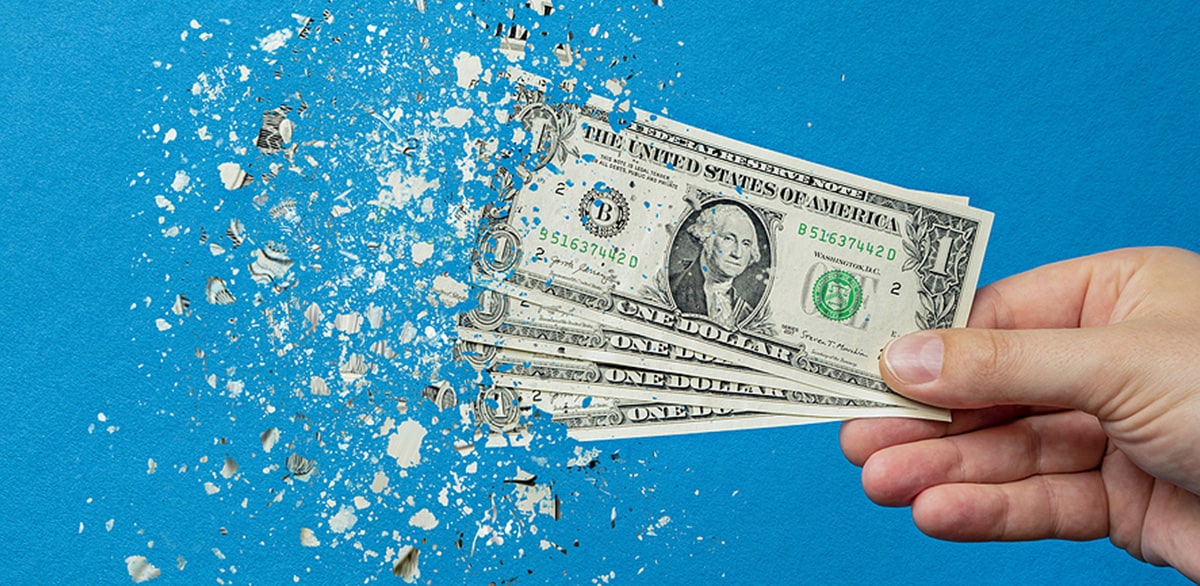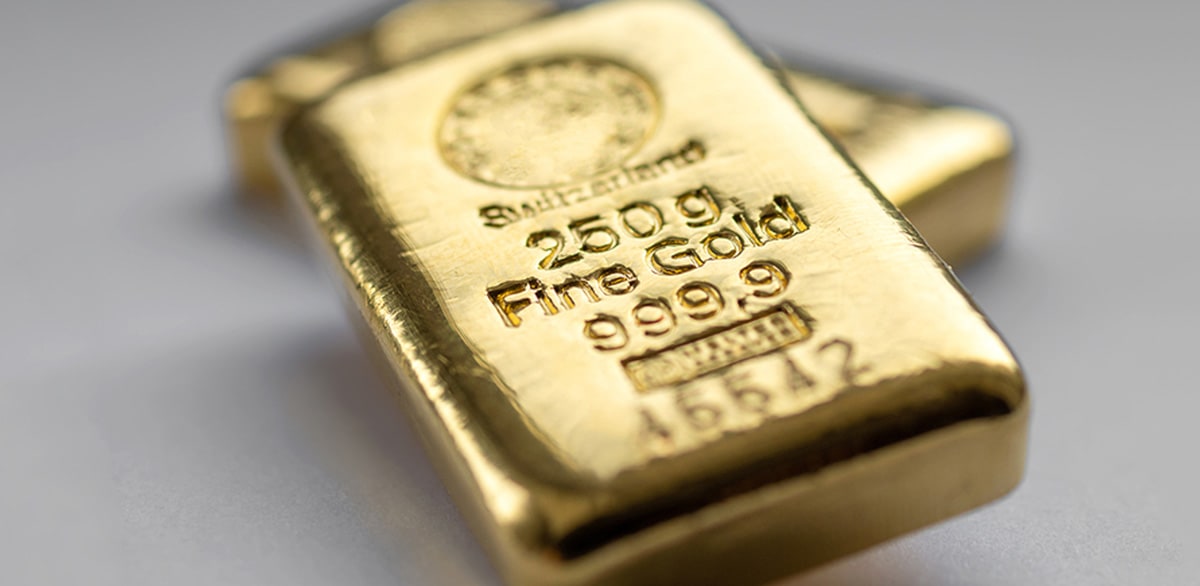
The US dollar continues to be adversely affected by US trade wars, heavily criticized protectionism policy, and other prominent geo-political issues.
Since the end of the gold standard in 1971 under President Nixon, the US dollar has been in a state of gradual decline. Known as the “Nixon Shock”, the US dollar was no longer linked to a tangible asset that would always retain value, and became dependent on government policy instead.
Today, the value of the US dollar is worth nearly 20% less than it was 10 years ago. There is no better time than now to buckle down and find ways to cushion your finances from the continued decline in the US dollar. Gold is an investment that performs well in almost any economic situation, and precious metals are a physical asset that can shield you from a devalued US dollar.
Let’s look at what dollar devaluation looks like in the United States, and how the potential collapse of this global reserve currency can eat away at your dollar-dependent assets.
De-Dollarization and the Devalued US Dollar
It is becoming apparent that we are steadily approaching a serious review of the US dollar’s position as a world reserve currency. Foreign governments are attempting to move away from the dollar, with countries like Iran and Russia vocal in their efforts to avoid crushing financial sanctions. This duo in particular has even expressed the desire to team up to create a cryptocurrency based on the gold standard, firm in redirecting all fiscal activity away from the dollar.
When the value of the dollar is comparatively less than other currencies, the price of imported goods rises, creating financial tumult for Americans across the country. Combatting a decline in purchasing power requires having a universally valuable asset. Many countries are gearing up to conduct trade using only their local currency, and global superpowers (like China and Russia) are announcing their intent to develop cryptocurrency backed by gold.
International decisions like this all have the power to massively devalue the US dollar. As the demand for US dollars decrease, the value of US Treasury bonds suffers, preventing the government from borrowing money, which could lead to a sovereign debt crisis. A potential sovereign debt crisis would further devalue the dollar, with poverty levels and unemployment rates rising to a nearly inconceivable high.
In truth, de-dollarization (the conscious effort of countries throughout the world to reduce their dependence on the US dollar) seems to be an issue that is not going away any time soon. The active plans to retreat from the US dollar only continue to have a negative impact on its value, and as global reliance on the dollar wanes, inflation and economic unrest will continue to balloon in the US.
A Potential Collapse of the US Dollar?

As you may have heard, there are many economic factors that could contribute to the collapse of the US dollar.
Inflation
Inflation is a measure of the rate at which prices of goods and services increase over time. When inflation occurs, the value of a currency decreases, meaning that the same amount of money will be able to buy fewer goods and services than before. In other words, the purchasing power of the currency decreases.
According to data from the Bureau of Labor Statistics, the Consumer Price Index (CPI) – which measures the average change in prices over time for goods and services – has risen by 5.4% over the 12 months ending in June 2021. This increase in inflation is partly due to supply chain disruptions caused by the COVID-19 pandemic, as well as increased demand for goods and services as the economy reopens. If inflation continues at this pace, it could reduce confidence in the US dollar and lead to its collapse.
Political Instability
Political instability can have an impact on the value of the US dollar. For example, debt ceiling standoffs within congress can lead to increased political polarization and financial market uncertainty. This could have reduced confidence in the US government and its ability to manage the economy.
Foreign trade policy and sanctions impact countries’ trust in the US dollar’s legitimacy. As mentioned, heavy sanctions can push a country into developing means of trade in their own currency, or establishing deals with other countries to create a currency to conduct trade with. Actions such as the European Union’s choice to ban an array of Russian banks from SWIFT (The Society for Worldwide Interbank Financial Telecommunication) could spark fear in other countries that the same could be done for them. A mass movement away from the US dollar as a result of dollar weaponization could more pressure on countries to move away from the dollar.
👉 Related: The Dollarpocalypse: Will the Dollar Collapse in 2023?
The Aftermath of a Dollar Collapse
If the US dollar were to collapse, it could have severe consequences for the US economy and the global financial system.
- Economic turmoil: A collapse of the US dollar could trigger a global economic crisis, as the US dollar is the world’s dominant reserve currency. This could lead to a severe recession or even a depression, as businesses and consumers would struggle to access credit and finance their operations.
- Job losses: The economic disruption caused by a collapse of the US dollar could lead to widespread job losses, as companies would be forced to cut costs and lay off workers. The unemployment rate could rise sharply, leading to increased poverty and social unrest.
- Financial instability: A collapse of the US dollar could also lead to financial instability, as banks and other financial institutions could suffer significant losses. This could trigger a wave of bankruptcies and defaults, as investors and creditors would struggle to recover their investments.
Examples of countries that have experienced similar crises in the past include Argentina and Venezuela. In both cases, hyperinflation and political instability led to a collapse of the local currency and a severe economic crisis. The Argentine peso, in this case, fell due to ballooning inflation in conjunction with a lack of global investor activity and increasing US interest rates. In Venezuela, the bolivar has lost over 99% of its value since 2013, leading to widespread poverty, shortages of basic goods, and social unrest.
Zimbabwe is another country that has felt the pressures of hyperinflation and devalued currency. In 2008, inflation ravaged the economy, with the prices of goods doubling every day. Within a year the Zimbabwean dollar had totally lost its worth, and the country resorted to the US dollar and its de facto currency. However, even this measure was not enough to prevent economic turmoil, as the country suffered from high unemployment and widespread poverty.
History has shown that countries that experience currency collapses often struggle to recover, and the path to economic stability can be long and difficult. It is essential to be prepared for situations like this and to possess assets that resist national tumult.
How Gold and Precious Metals Can Protect You

Investing in gold and precious metals is a way to protect your wealth. Gold has been used as currency for thousands of years because it’s durable, portable, and easy to store. Its intrinsic value comes from its rarity, unlike the US dollar, allowing it to perform well during economic crises. As such, demand tends to outstrip supply which makes these investments more valuable over time as their scarcity increases their worth relative to other goods or services (inflation).
Precious metals are widely considered to be one of the safest investments around because their value does not fluctuate as stocks or bonds do; rather, it tends to rise when other investments fall (or vice versa). This makes gold an excellent hedge against inflation–as prices increase over time due to rising costs in goods and services, so does the value of gold relative to other currencies like dollars or euros.
Gold and other precious metals are excellent investments because:
- Their value cannot be determined solely at an individual government’s discretion.
- Their price isn’t affected by interest rates or other factors that intangible assets like stocks and bonds.
Defend Yourself Against Dollar Devaluation Today
Finding ways to personally shield your wealth from this onslaught of global economic pressures can feel like a huge feat, but there are decisions you can make to keep your wealth from being eroded from the falling dollar. In the absence of the gold standard, investing in precious metals will help you resist the turbulence that comes with fiat money (paper currency valued by a government.)
At Scottsdale Bullion & Coin, we can help you understand how to safely invest and purchase precious metals. We’ll help you make physical investments that can guard your wealth against economic stagnation and the continuing decline of the US dollar.
Get started today by grabbing a FREE COPY of our Precious Metals Investment Guide to learn more.


